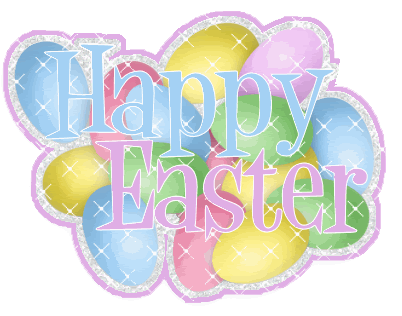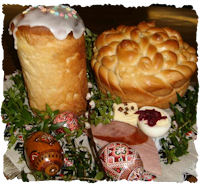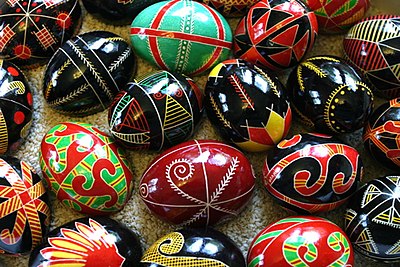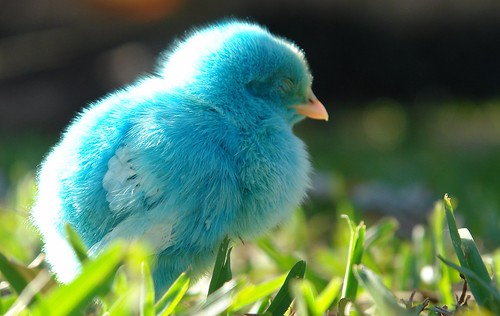 By the mid-sixteenth century the Julian calendar was out of whack with the lunar calendar by eleven full days. In 1582, Pope Gregory XIII made an eleven-day adjustment and Catholics adopted the Gregorian calendar. Since 1923, the Romanian Orthodox and Greek Orthodox churches have adopted the Gregorian calendar. However, they continue to use the Julian calendar for Easter calculations. Most Greek Orthodox churches currently celebrate Christmas on January 7 and New Year’s Day on January 14, according to the Gregorian calendar. This gap generally places Easter celebrations on the same Sunday in the Roman Catholic and Eastern Orthodox churches only once every three to four years (like last year). During non-leap years, Orthodox Easter is delayed by one, four, or five weeks (this year it is one week later). Hope this clarifies a lot ;)
By the mid-sixteenth century the Julian calendar was out of whack with the lunar calendar by eleven full days. In 1582, Pope Gregory XIII made an eleven-day adjustment and Catholics adopted the Gregorian calendar. Since 1923, the Romanian Orthodox and Greek Orthodox churches have adopted the Gregorian calendar. However, they continue to use the Julian calendar for Easter calculations. Most Greek Orthodox churches currently celebrate Christmas on January 7 and New Year’s Day on January 14, according to the Gregorian calendar. This gap generally places Easter celebrations on the same Sunday in the Roman Catholic and Eastern Orthodox churches only once every three to four years (like last year). During non-leap years, Orthodox Easter is delayed by one, four, or five weeks (this year it is one week later). Hope this clarifies a lot ;)And now I'd like to share some very interesting facts about Easter and its celebration and customs - enjoy!! :)
- The traditional act of painting eggs is called Pysanka.
- The custom of giving eggs at Easter time has been traced back to Egyptians, Persians, Gauls, Greeks and Romans, to whom the egg was a symbol of life.
- A tradition since 1878, the Easter Egg Roll on the White House lawn turns the area into a massive playground for children from all over the country.

- Every year at Easter Pope sends his " Urbi et Orbi " to the world.
- Red jelly beans are the favorite color kids pick.
- In the early 19th century, the first chocolate eggs were made in Europe. They remain among the most popular treats associated with Easter.
- Kids 1st grab for chocolate bunnies (76%) when checking out their Easter baskets, followed by marshmallow treats (18%), malted milk balls/eggs (17%) and jelly beans (16%).
- 8,968 pounds (4 067.8 kg!)... the weight of Guinness World Records’ largest egg ever made
- 5 million… marshmallow chicks and bunnies are made daily in preparation for the holiday
- more than 700 million... that's how many peeps Americans buy during the Easter season, making Peeps the most popular non-chocolate Easter candy.
- 76%… of Americans say people should eat the ears first on a chocolate bunny
- 2nd… biggest candy holiday, after Halloween
- 2.1 Billion… dollars spent on Easter candy annually
- $28.11… the amount the average American spends on Easter candy
- 88%... of adults carry on the Easter tradition of creating Easter baskets for their kids & 90% of adults hope for their own treat from the Easter Bunny <:)
- Nearly 120 million... cards wil be sent, exchanged, and given this Easter, which means it holds the 4th spot of the largest card-sending celebration in the U.S.
- 70 % …of Easter candy purchased is chocolate

And now a little about my country's tradition ;) Easter preparations begin on Holy Thursday when the traditional Easter bread Paska is baked and eggs are dyed different colors (although red remains the main color because it symbolizes Christ's blood). It is customary among Orthodox Christians to greet one another during the Easter season with the Pascal greeting. The salutation begins with the phrase "Christ is Risen!". The response is "Truly, He is Risen!"
Have a great holiday, peeps!! :)
http://abcnews.go.com/
http://easter.123holiday.net/
xo K





No comments:
Post a Comment